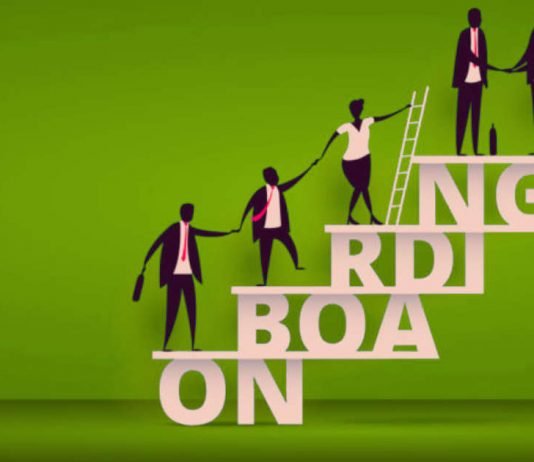Organizational onboarding is the process through which new employees join a company, beginning with job confirmation and continuing with employee orientations and the necessary training to be effective in a new function. The induction program is important for integrating a recruit psychologically, physically, and professionally into a company and its operational procedures.
Talent acquisition is a complex task. The right onboarding tools can aid in talent acquisition with the proper cross-boarding of the workforce from one job role to another. Addressing and onboarding the right potential talent is important for organizational success. What if the talent you seek is already in the workforce? To do so, you must have a strong system in place to identify the talent you require and cross-board them, which is the best way to enhance their potential.
Consequently, in the situation when employers’ hiring and salary budgets are low and they are often unable to fill a position with a new employee, internal cross-boarding may be regarded as a far more pocket-friendly and also considerably less hazardous option.
What does it take to develop programs that prioritize internal hiring over the search for talented candidates outside of the organization? This article will go over everything you need to know and will assist you in creating a process that will help you save money on hiring.
Contents
What is cross-boarding?
Cross-boarding is the procedure of analyzing existing employees, determining who might be a good fit for a vacant position, and then training and adapting the selected employee to the promotion and change of role. Rather than looking for new employees, it is about leveraging existing resources within the organization to perform tasks that arise.
It is possible to create a strategic cross-boarding process by evaluating your existing employee’s onboarding process in the context of an existing member of staff going to transition into a new role. As a result, the updated process can significantly ease the transition by increasing the role inductee’s engagement and willingness to take on the new role within the organization.
Why should we need to include cross-boarding?
Existing employees transitioning into new positions have numerous advantages, including high engagement and retention rates. Additionally, there is the benefit of hiring workers with deeper cross-functional understanding.
Cost-effective:
The training costs for developing skills in an existing employee are much lower than the costs of onboarding an external employee who is entirely new to the organization and operations. A newcomer may require information about company culture, values, and corporate objectives, but a cross-boarded employee does not. All of this is already known to a permanent employee. This saves time and leads to increased productivity.
Lower risk:
When you recruit new employees, there is a chance that they will underperform. They may be dissatisfied with their responsibilities or may leave the company in search of better opportunities. On the other hand, cross-boarding lessens that risk because the staff is already familiar with the goals and objectives of the organization. Furthermore, they will see the new role as a fresh start and will push themselves to progress in their professional careers.
Enhanced productivity:
Employees reach peak productivity quickly after completing the cross-boarding process. This is primarily due to their familiarity with the existing techniques and structures of the company. Furthermore, with training, they can understand their new role and start taking on the necessary responsibilities.
Improved retention:
Employees are always searching for new opportunities and ways of improving their skills, and cross-boarding can provide both. Employees are more likely to stay with a company if they can develop their professional careers through proper training and mentoring. This is due to the organization’s decision to allow employees to change jobs if they are interested. This increases retention and makes sure to keep your most valuable assets in the long run.
Improve the company culture:
The structure and decision-making of a company reflect its values and culture. When a company makes an effort to cross-board its employees, it demonstrates that it cares about and supports the success of its employees, and they will be proud to support this company.
Enhanced employee engagement:
When done in the right way, onboarding can set the tone for future employee engagement and reduce turnover. Cross-boarding accomplishes the same thing. Cross-boarding allows existing employees to acquire knowledge, develop new skills, advance in their careers, and feel valued, which leads to increased job satisfaction and motivation.
Conclusion
If the people experience and managers identify potential and capable cross-boarding applicants, they must keep an ear to the ground to analyze which employees have the right skills and potential to fit the new role. Internal hiring is completely tailored to your preferences. You can modify it to meet your specific needs and requirements.
To design a cross-boarding system that will benefit you, however, you must first start by understanding the dynamics of the modern world. Invest in your work and create a corporate culture that encourages employee engagement, productivity, and continuous improvement.


